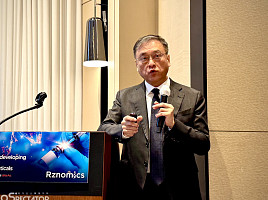기사본문
Helixmith, drawing phase 3 trials has ‘failed’.. “2nd phase 3 will begin within 6 months”
입력 2019-09-25 10:03 수정 2019-09-25 10:03
by Jongwon Jang

Regarding the results of the phase 3 clinical trials of Engensis, VM202-DPN, a gene therapy for diabetic neuropathy, Helixmith said on the 13th that the effects of placebo and Engensis have been greatly distorted due to the possibility of mixing the test drug, making it impossible to draw a clear conclusion. Due to problems in the clinical process, it was unprecedented to announce the results of the U.S. phase 3 clinical trials.
Helixmith said, “We found that some patients in the placebo group had concentrations of Engensis while patients in the Engensis group had too low concentrations of drugs. This suggests the possibility of mixing data, and it is impossible to verify the mixed subjects with the current data alone, so separate investigations are necessary.”
As a result, the final conclusion of the clinical trial is inevitably delayed after the second phase 3 trial, which will begin next year, according to the company. The U.S. Food and Drug Administration's conditional application for approval of Engensis, which had been announced as early as the end of 2020, also seems to have gone nowhere.
Helixmith set up a team of investigators led by Dr. Leonard Fish, an expert on Clinical QA, to launch a thorough investigation. The investigation will be conducted privately until a clear conclusion is reached after collecting evidence and analyzing it closely, considering the possibility of legal action later on. Helixmith explained that they will report to FDA in details on the final report to be submitted in November and at the meeting with FDA by the end of the phase 3 trial expected in December.
Helixmith found that in the Intent-to-treat (ITT) group, which analyzed efficacy of Engensis in all subjects, the difference in the three-month pain-reducing effect, which is the primary endpoint, was statistically insignificant compared to placebo. However, except those with a high probability of error, analysis demonstrated a statistically significant difference in pain.
Regarding its safety, Helixmith explained that there was a low frequency of adverse reactions across all clinical subjects, and there were no serious adverse events (SAEs) that were considered to be related to the drug, and that all of them were minor (Grade1) cases except for one major reaction to the injection site.
Helixmith explained that they would come up with a plan to manage the next three clinical phase more precisely and efficiently. The second third phase trial will be planned to begin in the next six months and targeted for all trials to be terminated between the end of 2021 and the first quarter of 22.







